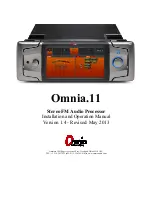
104BWeb server
11.3 User-defined web pages
S7-1200 Programmable controller
526
System Manual, 11/2011, A5E02486680-05
11.3.10
Advanced user-defined Web page control
When you generate data blocks for your user-defined Web pages, STEP 7 creates a control
DB that it uses to control display of and interaction with the user-defined pages. STEP 7 also
creates a set of fragment DBs that represent the individual pages. Under normal
circumstances, you do not need to know the structure of the control DB or how to manipulate
it.
If you want to turn a web application on and off, for example, or manipulate individual manual
fragments, you use the control DB tags and the WWW instruction to do so.
Structure of the control DB
The control DB is an extensive data structure, and is accessible when programming your
STEP 7 user program. Only some of the control data block tags are described here.
Commandstate structure
"Commandstate" is a structure that contains global commands and global states for the Web
server.
Global commands in the "Commandstate" structure
The global commands apply to the Web server in general. You can deactivate the Web
server or restart it from the control DB parameters.
Block tag
Data type
Description
init
BOOL
Evaluate the control DB and initialize the
Web application
deactivate
BOOL
Deactivate the Web application
Global states in the Commandstate structure
The global states apply to the Web server in general and contain status information about
the Web application.
Block tag
Data type
Description
initializing
BOOL
Web application is reading control DB
error
BOOL
Web application could not be initialized
deactivating
BOOL
Web application is terminating
deactivated
BOOL
Web application is terminated
initialized
BOOL
Web application is initialized
Request table
The request table is an array of structures containing commands and states that apply to
individual fragment DBs. If you created fragments with the AWP_Start_Fragment (Page 503)
command of type "manual", the STEP 7 user program must control these pages through the
control DB. The request states are read-only and provide information about the current
fragment. You use the request commands to control the current fragment.















































